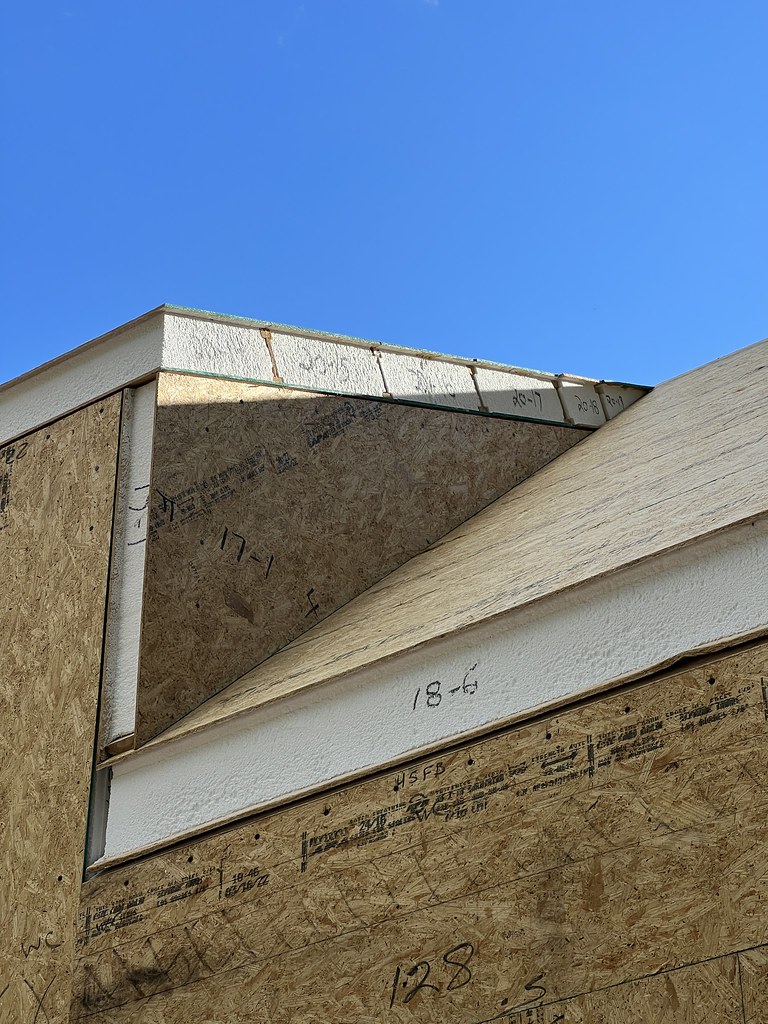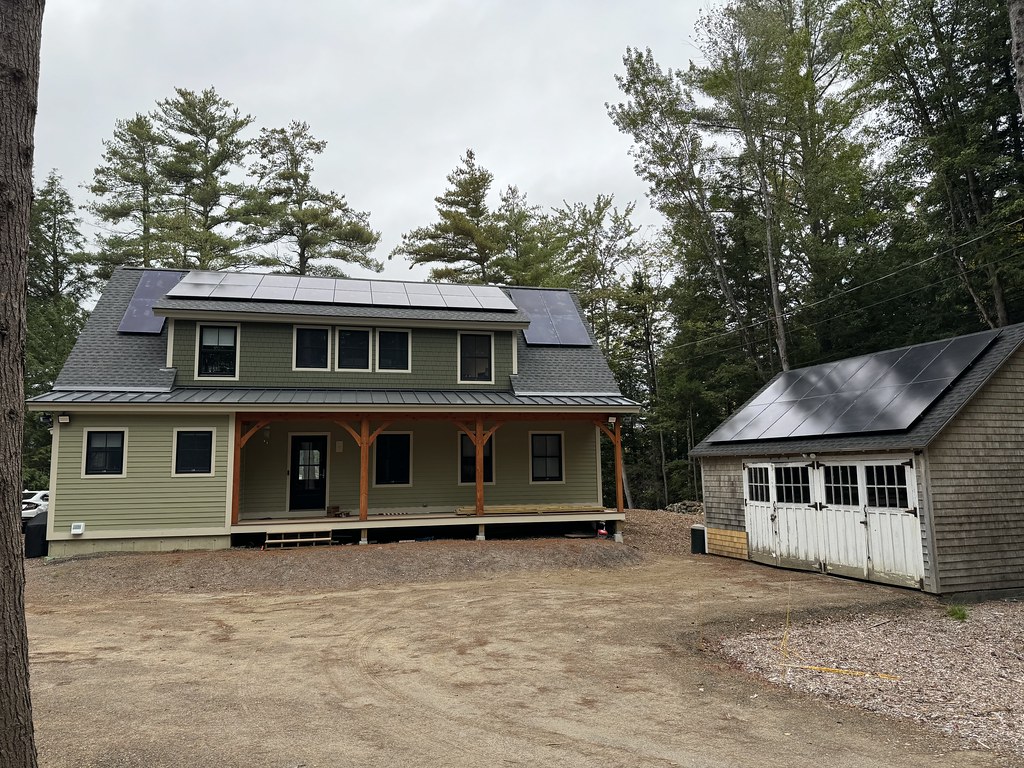brkaus
Well-Known Member
Yup. But in any case, not good for saving money with a battery.No one way is better or worse than the other. Each has its upside and downside.
You can install our site as a web app on your iOS device by utilizing the Add to Home Screen feature in Safari. Please see this thread for more details on this.
Note: This feature may not be available in some browsers.
Yup. But in any case, not good for saving money with a battery.No one way is better or worse than the other. Each has its upside and downside.
Yep, which is why I have 30kw of solar, 90 panels! I can be off grid 100% for like 6 months of the year with my 7 batteries. BUT, still no ROI for any of this. I will not either live long enough, or be in this house to ever recover BUT is sure is nice to heat and cool my house with my heat pumps to ANY temp all year long, and with zero cost.Our electrician lives in an area where he gets 0 credit for his exports so batteries have value. But the first step was to dramatically oversize his system since solar is hilariously cheap now. That's the first paradigm shift I needed to accept. MASSIVE curtailment. He needed to overproduce not just a little. But A LOT. ~2x what he used. This was the only way to ensure the batteries were utilized fully nearly everyday. Cheap solar is what made this possible. If there was only sufficient surplus half the time the batteries would effectively be 2x the cost. You need to be giving away or losing ~half your production regularly before storage makes sense.
The cost of storage for DC coupled batteries is also a lot lower now but you need to shop around. RUIXU is offering 16kWh 48v packs for ~$3k.
BUT, still no ROI for any of this.
We should just all work to get the POCO's to raise rates as much as possibleThat's less than ~10 years for it to pay for itself. Less than 5 years in a place like CA with high electric rates.
Grid is grid. Batteries are a very wise investment if your goal is energy reliability. ROI might not even make it onto the goal list for many people. It didn't appear on mine.Mesure of the number of viable charge/discharge cycles is right around 3600. After that it may be a target of 70% capacity, but you can't count on it - and warranty is over. Even at that usable is diminished to even less stored charge, battery cannot be fully discharged without potential damage.
I don't think it's a wise investment if you have Net metering, Grid is in effect your battery.
As I said, if one has extra money that is not putting food on the table, or gas in the car, fun TOY, but, ..Grid is grid. Batteries are a very wise investment if your goal is energy reliability. ROI might not even make it onto the goal list for many people. It didn't appear on mine.
But it can avoid putting gas in a car. I no longer do that, for example. Another factor to consider.... my own ROI calc for my entire system moved into "maybe I'll live to see it" territory when I threw in the cost of the Tesla car, the PWs, and the Solar Roof. Without the PWs, the date moves on out again. So, while batteries may not support a feasible ROI on their own, they can contribute to to an overall situation that reaches a feasible ROI when combined with other investments that enable the avoided cost part of the calc to get significantly larger. Especially if net metering isn't in the picture, or even if it is - but then disappears.As I said, if one has extra money that is not putting food on the table, or gas in the car, fun TOY, but, ..
But I should also add that the much larger factors in my perhaps semi-delusional ROI calc were the future avoided costs of purchasing gasoline, and future roof replacements. The second due to Solar Roof, panels wouldn't be able to claim this the same way. The PWs are enablers of the rest.But it can avoid putting gas in a car. I no longer do that, for example. Another factor to consider.... my own ROI calc for my entire system moved into "maybe I'll live to see it" territory when I threw in the cost of the Tesla car, the PWs, and the Solar Roof. Without the PWs, the date moves on out again. So, while batteries may not support a feasible ROI on their own, they can contribute to to an overall situation that reaches a feasible ROI when combined with other investments that enable the avoided cost part of the calc to get significantly larger. Especially if net metering isn't in the picture, or even if it is - but then disappears.
Every case is different though - my own did not involve a loan, and that always helps bring an ROI a little closer.
As I said, if one has extra money that is not putting food on the table, or gas in the car, fun TOY, but, ..
What did you assume for fixing the stuff when breaks?But I should also add that the much larger factors in my perhaps semi-delusional ROI calc were the future avoided costs of purchasing gasoline, and future roof replacements. The second due to Solar Roof, panels wouldn't be able to claim this the same way. The PWs are enablers of the rest.
Nothing at all.... didn't get that granular. It's a bit of a delusional exercise. Perhaps undertaken in an attempt to come up with something when the subject comes up. I think the elements of the basis can be defended, but I certainly may not have captured everything. Probably the PWs don't actually have as much an effect on an ROI as I want them to. But in my experience with Tesla products, not a lot of fixing is required. I know there are other experiences....What did you assume for fixing the stuff when breaks?
The problem with backup is I use 50Kwh a day on average In winter. House is entirely electric. Geo thermal heat etc. spring / fall is 30kwh a day and summer ~40kwh a day.
We work from home. My Model S 2.5 years old and has 16K miles. And I expect that driving rate to even go lower. So cutting our driving during/charging during power fail won’t save much. There is no overage to charge batteries with in winter.
So let’s say I can conserve during power failure. To 30 KWh (most of that being heat). That would be ~3 Power Walls that could run the house for 1 day. Plus splitting up panels and putting in a switch. Tesla estimate says $30K. And Tesla states 15hrs backup with 100% backup and 72% consumption rate in winter.
Chances are a snow storm would be what knocks out power and covers panels that won’t generate all that much in winter even if they were clear and sunny. Average production in January was 5kwh a day. So much for charging up those batteries on Solar.
Battery backup for short power outages is a nice perk. So I still have to have a Generator.
Even at that size, and I assumed I could fully charge (with overage) and fully use 30kwh a day ((I only use 40 kWh for the whole day in summer) for 6 months at double the electricity cost. It would take 65 years to break even. And that’s the most optimistic calculation because no way I could utilize that much battery. Optimum would probably be 2 powerwalls. But that’s like a whopping 9 hrs of backup.
If TOU does come to Eversource NH then that could change numbers drastically.
I do have a request for quote from my Enphase installer but I expect them to be 50% more than Tesla. Enphase does warranty their battery for 15 years.
Also in my calculations I didn’t figure in any battery degradation.
This is a bit sideways, but have you looked at adding insulation? E.g. windows, insulated window coverings, attic, walls, etc.?The problem with backup is I use 50Kwh a day on average In winter. House is entirely electric. Geo thermal heat etc. spring / fall is 30kwh a day and summer ~40kwh a day.
We work from home. My Model S 2.5 years old and has 16K miles. And I expect that driving rate to even go lower. So cutting our driving during/charging during power fail won’t save much. There is no overage to charge batteries with in winter.
So let’s say I can conserve during power failure. To 30 KWh (most of that being heat). That would be ~3 Power Walls that could run the house for 1 day. Plus splitting up panels and putting in a switch. Tesla estimate says $30K. And Tesla states 15hrs backup with 100% backup and 72% consumption rate in winter.
Chances are a snow storm would be what knocks out power and covers panels that won’t generate all that much in winter even if they were clear and sunny. Average production in January was 5kwh a day. So much for charging up those batteries on Solar.
Battery backup for short power outages is a nice perk. So I still have to have a Generator.
Even at that size, and I assumed I could fully charge (with overage) and fully use 30kwh a day ((I only use 40 kWh for the whole day in summer) for 6 months at double the electricity cost. It would take 65 years to break even. And that’s the most optimistic calculation because no way I could utilize that much battery. Optimum would probably be 2 powerwalls. But that’s like a whopping 9 hrs of backup.
If TOU does come to Eversource NH then that could change numbers drastically.
I do have a request for quote from my Enphase installer but I expect them to be 50% more than Tesla. Enphase does warranty their battery for 15 years.
Also in my calculations I didn’t figure in any battery degradation.
This is a bit sideways, but have you looked at adding insulation? E.g. windows, insulated window coverings, attic, walls, etc.?
For winter outages, I think it is either, suffer, or wood heat and candles, or a generator. The latter requires a transfer switch and does not play well with Powerwalls, at least currently. (Not that I see Tesla changing that.) Enphase is, I think a better choice, as Enphase can turn on a generator, charge batteries, and then turnoff the generator. Just my $0.02...
All the best,
BG





